Transcription of GUIDELINES FOR CURING OF DECORATIVE CONCRETE
1 CURING OF DECORATIVE CONCRETE . A guide for CURING of DECORATIVE CONCRETE 8329 Monticello Road, Shawnee, KS 66227 Tel: (913) 422-4443 Fax: (913) 422-8882. Website: Email: This is an outline and guide for CURING of DECORATIVE CONCRETE for horizontal applications. The guide does not include any GUIDELINES for vertical applications. Please refer to ACI 303. This guide is different to many other guides on CURING and stresses thinking outside of the box (ACI 308) with DECORATIVE CONCRETE . One of the primary purposes of CURING is to slow the moisture loss from the CONCRETE and reduce carbonization (ACI 302 The Purpose of CURING ).
2 The Guideline recognizes that normal CURING for DECORATIVE CONCRETE is unrealistic, in some cases. When executing DECORATIVE CURING practices, it is highly recommended that all materials be on the job site and ready to use when the appointed CURING window becomes open. All parties involved must perform this critical operation as quickly as possible. When making use of DECORATIVE CONCRETE applications, with either stamping or trowel finish or colored floors, consider the weather and the effects on the CONCRETE . Low humidity, windy and hot weather all increase the rate of bleed water evaporation and should be avoided if construction schedules allow postponement of pours.
3 When possible, schedule DECORATIVE CONCRETE pours at different times from than normal CONCRETE . The final look of DECORATIVE CONCRETE is typically much more important than the speed of placement. When postponement of a pour is not possible, the use of wind breaks, misting to increase humidity and early morning or late evening pours are within the GUIDELINES of ACI 308 can be effective mitigation techniques. For pouring on windy and hot days, refer to ACI 308 Nomograph on evaporation rates. The Nomograph calculates the #1 Air temperature in / F. #2 Humidity in percentage # 3 CONCRETE Temperatures in / F.
4 # 4 Wind speed You can then with some simple math find the rate of evaporation in the CONCRETE knowing this can aid in finishing procedures. Reference ACI 305. ASTM C 1064. Mix designs that optimized aggregate gradation will have lower water demands. Use of clean, sound, hard aggregates is recommended for DECORATIVE CONCRETE applications. Aggregate sources that contain more than two-percent materials passing a number 150 m (No. 100) sieve or that have low durability should not be used. Aggregate that is known to be reactive shall not be used. Lower water-cement ratios reduce the amount of water and result in better CONCRETE color as well as durability for the CONCRETE .
5 Air-entrained mixes properly compacted and graded subgrades and surface hardeners reduce slab surface dehydration rates. This can reduce the risk of carbonization on the surface of the CONCRETE . Many stamped and stenciled CONCRETE projects make use of fiber reinforcement. Fiber reinforcement helps reduce plastic shrinkage cracking and should be considered for use as many DECORATIVE applications cannot be cured as quickly thus the need for fibers in help with control of early shrinkage. The use of chemical admixtures should be considered as they reduce the mixes water demand and increase workability, which aids the placement of DECORATIVE CONCRETE .
6 Please note that color suppliers of both integral and hardener, and CURING manufactures should be contacted for their preferred methods of CURING and compatibility of cures with coloring agents, especially dyes and stains! DECORATIVE CONCRETE SUPPLY, INC. 1 | Page CURING OF DECORATIVE CONCRETE . A guide for CURING of DECORATIVE CONCRETE 8329 Monticello Road, Shawnee, KS 66227 Tel: (913) 422-4443 Fax: (913) 422-8882. Website: Email: References: ACI 302 CONCRETE Floor and Slab Construction ACI 308 guide to CURING ACI 310 DECORATIVE CONCRETE ACI 305 Hot weather ASTM C156 Test for Moisture Retained After Cures are Applied ASTM C309 Specification for CURING ASTM C1315 Test for Cures with Special Properties ASTM C 1064 Temperature of fresh CONCRETE ICRI Guideline 03732 guide for Selecting Profiles for Floor Coatings and Surface Preparation Methods CURING (ACI 308).
7 The term CURING describes the process in which hydraulic cement matures and develops the hardened properties of the CONCRETE . The rate of evaporation greatly affects how well CURING takes place. The rate of evaporation depends on the environment surrounding the CONCRETE and the measures taken to limit the loss of hydration water and heat (note ACI 308-81 and ACI 308 on rapid evaporation loss). DECORATIVE CONCRETE SUPPLY, INC. 2 | Page The use of evaporation retardants can be extremely effective in DECORATIVE CONCRETE applications. Even when the weather conditions are ideal for CONCRETE placement, the inherent nature of coloring and antiquing of DECORATIVE CONCRETE can delay standard CURING methods.
8 Every extra step that can be done should to insure the CONCRETE has maximum protection during the early stages of hydration. Evaporation retardants slow moisture loss and should NEVER be worked into the fresh CONCRETE if labels say finishing aid be sure and call the manufacturer to insure the material will be properly used. Protection on bright sunny days is also critical to the DECORATIVE CONCRETE especially when colors are involved careful placement and cure methods are vital on these days, when pouring against buildings or walls they may reflect heat and sunlight onto the slab therefore affecting the look of the colored CONCRETE Proper CURING allows the CONCRETE to hydrate and slows early moisture loss.
9 The CURING period is defined from the beginning of placement to until the desired properties of the CONCRETE have been achieved. CONCRETE that is well cured will darken the look of the CONCRETE while poorly cured or un-cured CONCRETE can result in an uneven look. This guideline will follow ACI 308 and add additional information as approved through ACI 308 and ACI 310. When CURING CONCRETE it is important to remember that some methods used have been misinterpreted. Although DECORATIVE CONCRETE practices have been used for many years, proper CURING has been avoided and the difference between CURING and sealing has been misunderstood.
10 Both liquid release agents and evaporation retardants do not qualify as CONCRETE cures but have been used so in the past. Every effort should be made to cure DECORATIVE CONCRETE as soon as possible. CURING should take place immediately after finishing when no damage will be done to the CONCRETE surface. CURING too soon, (which happens often on grey CONCRETE ) can alter the appearance of the DECORATIVE CONCRETE . Refer to ACI. 308 and for more information. Many membrane cures that are sprayed on too quickly can slightly damage the surface sometimes giving the look of raindrops.




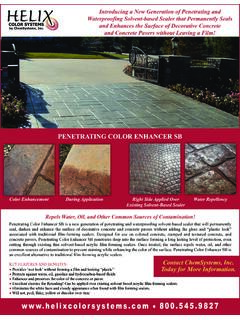
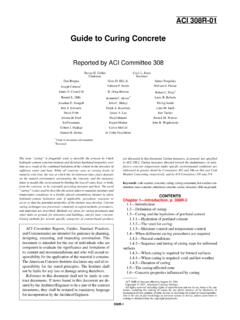
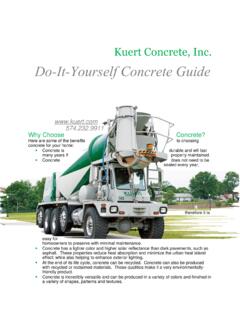
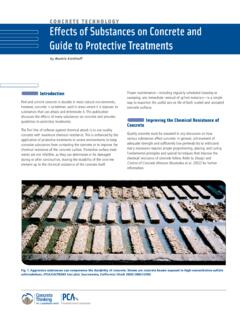
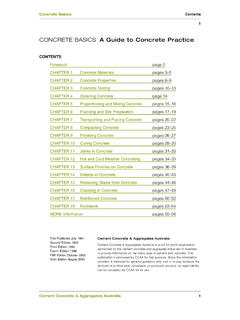
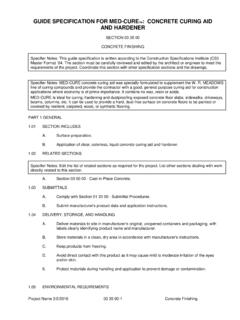
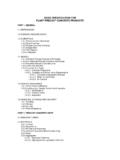

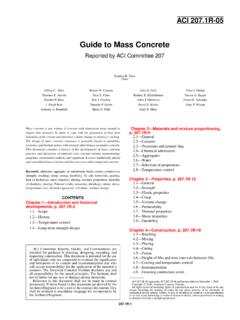
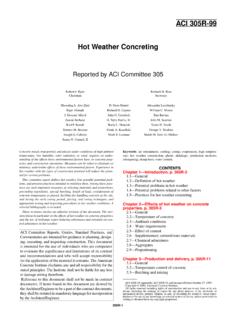
![6ITSVXIH F] %'- 'SQQMXXII - dl.mycivil.ir](/cache/preview/4/b/b/f/2/e/8/1/thumb-4bbf2e81b2b2df04c22714e49f0954ce.jpg)